Tanaka Hisashige is one of Japan’s most prolific inventors. Creating everything from mechanical dolls to weapons of destruction, this guy did it all. He even started the company that later became known as Toshiba. Yeah, the Toshiba. During his life, he jetsetted all across Japan inventing masterpieces and sharing his genius with one and all.
While not quite as famous, I mean, not as eccentric as Dr. NakaMats, Tanaka is fondly known as “the Thomas Edison of Japan.” All things considered, he’d probably rather be known as “the Nikola Tesla of Japan”, but it is what it is. Anyway, this Tanaka guy is a pretty hoopy frood. Let me tell you why.
The Early Life
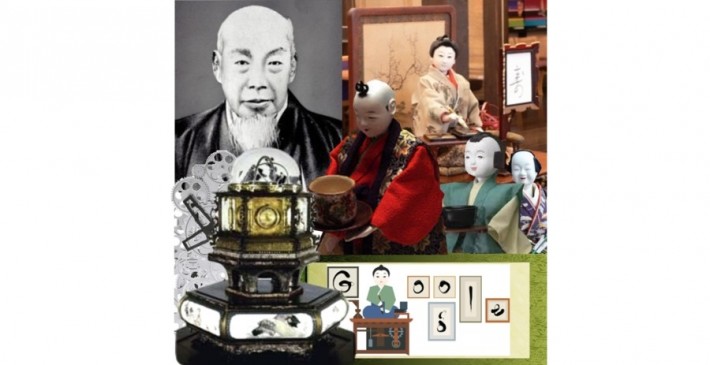
Tanaka was born in present day Fukuoka prefecture in 1799 and was the eldest son of a skilled tortoiseshell craftsman. Watching his father constantly working on these intricate tortoiseshell ornaments instilled a great sense of creativity in young Tanaka.
At the age of eight, Tanaka invented what he called an “inkstone case with a secret lock.” The drawer required a cord to be twisted in just the right way in order to open it. He brought it to school with him and challenged his classmates to open the drawer. Many tried but none succeeded.
By the age of fourteen, Tanaka had already invented a loom. He succeeded in weaving beautiful designs into fabric with his creation. Before this, the looms were too simple to create such intricate and beautiful designs. People were starting to recognize Tanaka’s potential.
At twenty, he was making autonomous dolls powered by hydraulics (karakuri dolls). They’re really quite fascinating.
These karakuri dolls were capable of relatively complex movements and were in high demand by the aristocrats, daimyo, and shogun. The style of the one in the video above is by far his most famous. Because Tanaka’s dolls were so impressive, he ended up performing all around Japan with them by the age of twenty-one.
Another interesting thing about the arrow shooting dolls of his was that some were actually programmed to miss one of its four shots. These dolls would make a happy motion when its arrow hit the mark and a look of sorrow when it missed. The video above doesn’t really highlight this, but just trust me on this one.
Since he was the eldest son, he was fated to take over the family business, but he convinced his father to let his younger brother take over things while he traveled around the country and pursued his dream of being an inventor. This is also about the time when people started referring to him as “the genius of mechanical wonders”.
Tanaka Hits His Stride

By his mid-thirties, mechanical doll shows had started to fall out of fashion so Tanaka relocated to Osaka where he tinkered with pneumatics, hydraulics, and various forms of lighting centering around canola oil. He invented the pocket candlestand (a portable candlestick that collapsed down to pocket size), and the long-burning lamp (an oil burning lamp with air-pressure pump fuel filler).
These long-burning lamps of his were roughly ten times brighter than a conventional candle and came with a glass globe to prevent flickering. Because of their incredible popularity, Tanaka went on to create seven different models. Tanaka catered to his customers’ needs and became both successful and popular as a result.
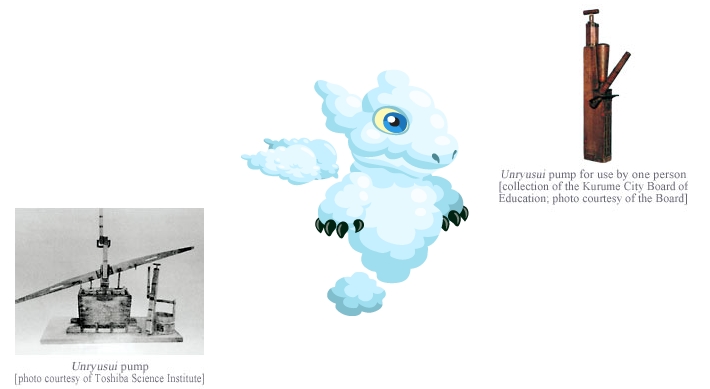
He later moved to Kyoto where he studied traditional Japanese mathematics, the calendar, and astronomy. While there, he invented a fire pump called “cloud dragon water” which used air pressure to shoot an adjustable stream of water up to thirty feet high. Like his lighting inventions, Tanaka went on to craft various iterations of this fire pump which were used for a wide variety of tasks.
In his early fifties, Tanaka crafted what I believe to be his most impressive invention. He created the Myriad year clock. Of all clocks, this thing definitely takes the cake. It’s probably one of the most impressive clocks I’ve seen. It’s also been designated as a Important Cultural Property by the Japanese government.
The clock can show the time in seven ways (time of day, day of week, month, moon phase, Japanese time, Solar term) and consists of more than 1,000 parts which Tanaka made all by himself with the simplest of tools. It took more than three years for him to finish the assembly.
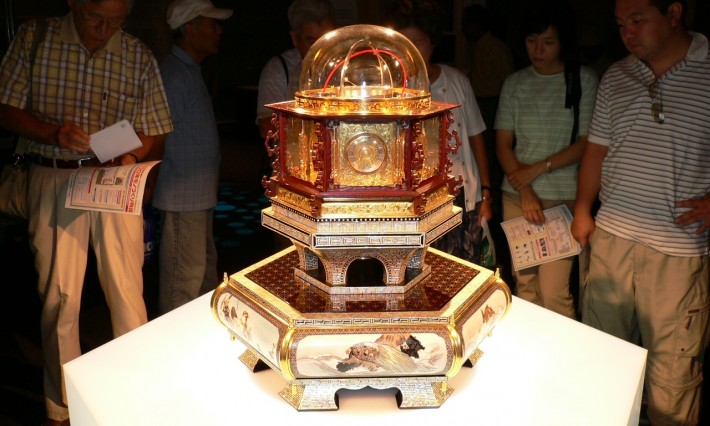
In 2004 the Japanese government attempted to craft a replica of Tanaka’s masterpiece. It took more than 100 engineers over six months to build it. Even so, they found it impossible to make exact copies of some parts which just goes to show how impressive an accomplishment the original was for Tanaka.
Since clocks are so awesome, crafting and innovating them around this time was considered one of the most impressive things an inventor could do. Tanaka produced many other ingenious mechanical timepieces such as the pillow clock and drum clock. He also created Japan’s first planetarium.
With the development of the sonno joi (revere the emperor, expel the barbarians) movement, Kyoto became increasingly dangerous for people involved with foreign technology and influences. Therefore, Tanaka ended up moving to Saga in Kyushu where he started inventing bigger, more dangerous creations.
Tanaka’s War Machines
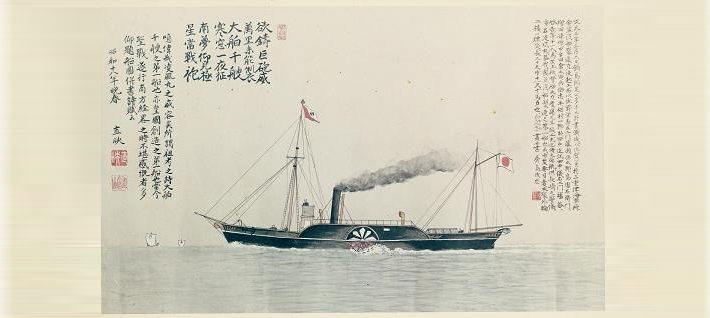
In Saga, Tanaka designed and built Japan’s first domestically made steam locomotive and steam warship. This is a pretty big change from dolls and clocks, but Tanaka had reference to a Dutch book on the matter and had also watched a Russian demonstration of a steam engine in Nagasaki. Even with this limited exposure to steam powered vehicles, Tanaka and his crew were able to build these massive machines. Pretty impressive.
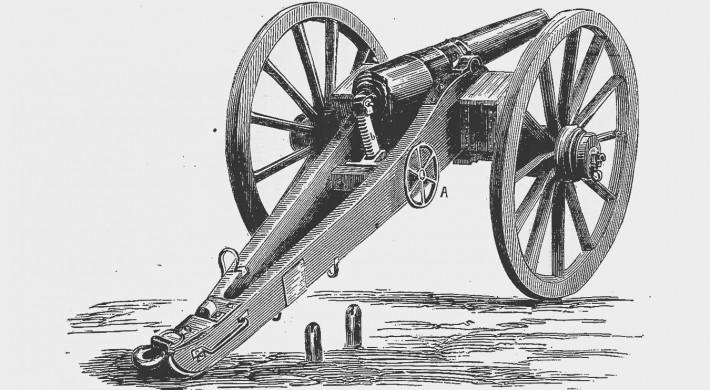
He also did some work leading to the creation of a specialized furnace for casting iron in Saga which was used for producing Armstrong guns (see above). In his mid-sixties, he returned to his stomping grounds in Fukuoka prefecture and assisted in the development of various modern weapons.
While there, he also invented a vast array of non-weaponized inventions. These included a machine for irrigating fields at high elevations and Japan’s first artificial ice maker.
Old Age and Death
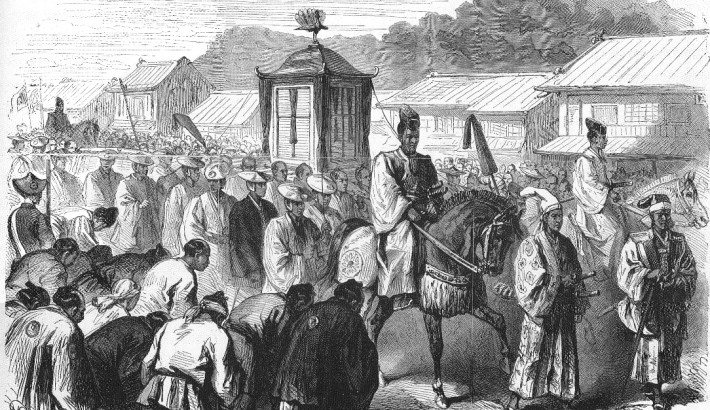
Six years after the Meiji Restoration and at the ripe old age of seventy-four, the spritely Tanaka was invited to make telegraphs in Tokyo. He soon relocated to Ginza, renting the second floor of a temple in what is now known as Roppongi.
This measly workshop of his eventually involved into his first and only company, Tanaka Engineering Works. This company was the first manufacturer of telegraph equipment in Japan.
In 1881, Tanaka died of old age at eighty-two. His son then took over Tanaka Engineering works. The name was changed to Shibaura Engineering Works in 1904, merged with Tokyo Denki in 1939, and then became known as Tokyo Shibaura Denki. More commonly, though, it was known as Toshiba. To-kyo Shiba-ura Denki. Get it?
Toshiba and Tanaka’s Legacy
Today Toshiba is a multinational engineering and electronics conglomerate with over 200,000 employees. Its products and services include information technology, communications equipment and systems, electronic components and materials, power systems, appliances, infrastructure systems, medical and office equipment, lighting, logistics, and laptops. They don’t make telegraphs anymore, though.
Google even made this in memory of the guy.
Even though it doesn’t carry the Tanaka name, Toshiba is still a living testament to the man that started it all, much like Thomas Edison and General Electric in the United States. He even got his own room in the Toshiba Science museum.
